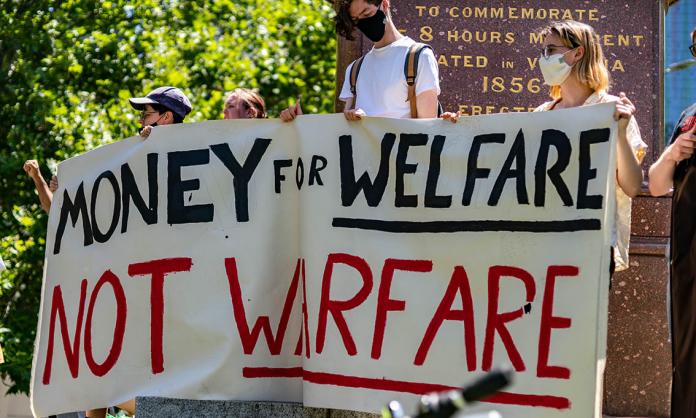Australia has some of the most miserable unemployment benefits of any developed country, and the Albanese government is refusing to increase them across the board.
The JobSeeker payment has been declining relative to median wages for almost 30 years. The current rate of $50 per day sits well below the poverty line. The crisis in welfare has intensified as cost-of-living pressures mount for millions of Australians, both in paid work and on Centrelink. What have been recognised for decades as grossly inadequate payments are now, in the context of soaring prices, criminally low.
Welfare recipients are forced to choose between essentials: whether to buy food or medicine or pay the bills. Food banks are reporting increased demand as millions across the country regularly skip meals, priced out of even the cheapest options at supermarkets. In a recent survey of the rental market, Anglicare Australia found that only four rentals out of 45,000 listed nationwide were affordable for a single person on JobSeeker. For someone on Youth Allowance, there were zero—not even a room in a share house.
Treasurer Jim Chalmers recently acknowledged that JobSeeker is “tough” to live on. NDIS Minister Bill Shorten admitted on Sky News that he couldn’t live on it. Prime Minister Anthony Albanese repeatedly reminds us that he knows what it’s like to grow up poor. But does that mean the government will substantially increase the payment, as per the recommendations of its own advisory committee? Absolutely not.
Chalmers reiterated that his aim is not to boost financial support for those out of work, but to “move as many people as we can off that payment”—in other words, to leave thousands of people languishing below the poverty line. In a context where financial institutions in Australia and around the world are arguing that the unemployment rate should be increased, not brought down, this will mean more people are forced to subsist on JobSeeker, not fewer.
When pressed about welfare, Labor ministers fall back on arguments about needing “budget repair” and not wanting to feed inflation. “We’re not able to fund every single good idea”, Deputy Prime Minister Richard Marles said recently. But they have no issue with splashing billions of dollars on the military and tax cuts for the wealthy.
It would cost $24 billion over the next four years to increase JobSeeker payments to 90 percent of the aged pension, according to researchers from the Australian National University: just a 4 percent increase in total spending on welfare cash payments. This is the bare minimum recommended by the government’s Economic Inclusion Advisory Committee. A more comprehensive 10-year plan is estimated to cost $75 billion.
That is a small fraction of the more than $254 billion cost of the Stage 3 tax cuts and the $368 billion dedicated to building nuclear submarines. In addition to these headline expenditures, there are the everyday handouts to business and the wealthy: subsidies to the fossil fuel industry and tax concessions on investment properties, to name a few.
It’s not that there isn’t enough money to raise JobSeeker, launch a massive public housing build, inject funding into the country’s decrepit services or any number of other desperately needed social investments. It’s a question of political will, and the Labor Party is more interested in helping the rich get richer and gearing up the country for war than it is in looking after the most vulnerable.
During the pandemic, JobSeeker payments were doubled overnight. This lifted thousands out of poverty and allowed people to pay their bills, buy fresh food and even spend a little money on things they enjoy. This episode demonstrated that a huge, life-changing increase to welfare payments is entirely possible and could be implemented tomorrow.
But this measure was quickly scrapped, and the situation today is even more dire than it was pre-pandemic.
Recent pre-budget leaks to the media indicate that the government intends to raise JobSeeker for those over the age of 55—possibly in response to widespread outrage at what seemed to be its blanket refusal to raise the rate. While 220,000 welfare recipients will receive some much-needed relief, another 680,000 will get nothing at all. Labor is trying to appear as though it cares about the most disadvantaged, but basically is just wiping its hands of the problem.
Australia is swimming with money: corporations are making super-profits, the rich are getting tax breaks, and the military budget is rising. It’s workers and the poor who are currently suffering, a suffering which is set to get significantly worse under the Labor government.








